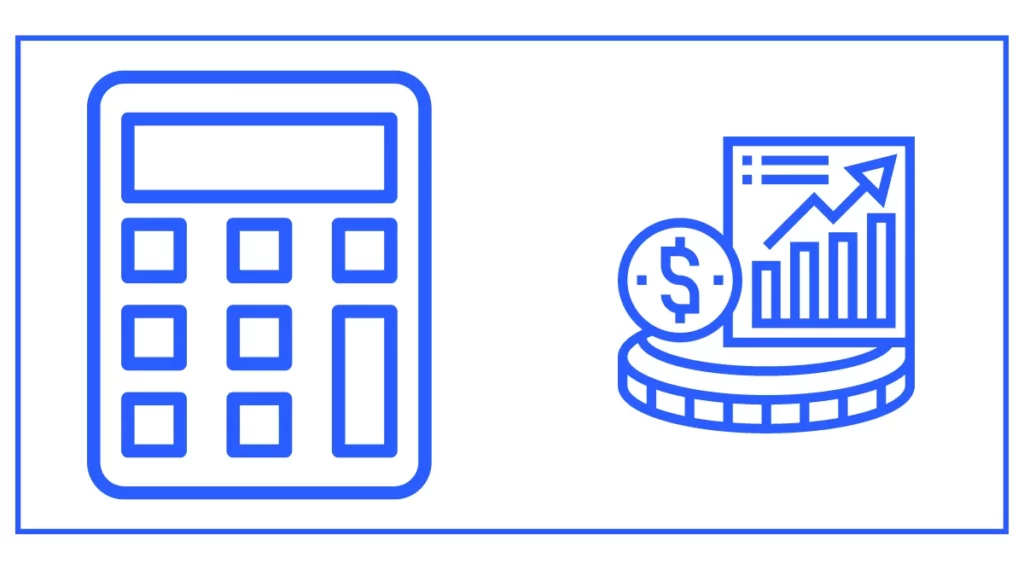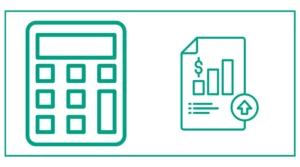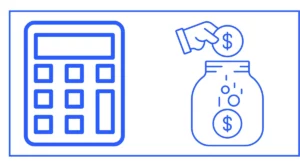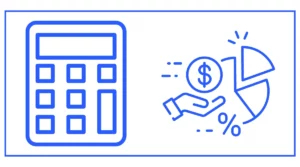NOI Calculator ( Net Operating Income)
The NOI calculator ( Net Operating Income) helps you calculate the net operating income, total annual income, and total operating expenses.
The NOI considers the monthly rent, other monthly income, annual real estate taxes, insurance, utilities, repairs and maintenance, property management, and other operating expenses.
In case you don’t know, NOI calculates investment profitability quickly. After subtracting operating expenses, it determines real estate investment revenue and profitability.

You might be interested in Cost Basis or MIRR finding calculators.
What is Net Operating Income (NOI)?
Net Operating Income, commonly referred to as NOI, is a financial metric used to evaluate the profitability of income-generating properties. It represents the total income a property generates minus all necessary operating expenses. NOI is a key indicator of a property’s ability to generate income and is widely used by real estate investors, lenders, and analysts to assess the potential of a property.
The Importance of NOI in Real Estate Investment
NOI is a powerful metric for several reasons:
- It provides a clear picture of a property’s cash flow potential.
- It helps investors compare different properties on an equal footing.
- It’s used in calculating other important metrics like the capitalization rate (cap rate).
- It assists in determining the market value of a property.
Understanding and accurately calculating NOI is essential for any serious real estate investor or property owner.
How to Calculate Net Operating Income
The NOI formula is relatively straightforward:
NOI = Gross Operating Income - Operating ExpensesLet’s break down each component:
Gross Operating Income
Gross operating income includes all revenue generated by the property. This typically consists of:
- Rental income from tenants
- Additional income sources such as parking fees, laundry machines, or vending machines
It’s important to note that gross operating income is not the same as potential rental income. It takes into account factors like vacancy rates and credit losses.
Operating Expenses
Operating expenses encompass all the costs associated with running and maintaining the property. These may include:
- Property taxes
- Insurance
- Utilities
- Maintenance and repairs
- Property management fees
- Landscaping
- Legal and accounting fees
It’s crucial to note that operating expenses do not include mortgage payments, depreciation, or capital expenditures.
Using Our NOI Calculator
Our NOI calculator is designed to simplify the process of determining the net operating income of a property. Here’s how to use it effectively:
- Enter the monthly rent amount in the “Monthly Rent ($)” field.
- Input any other monthly income in the “Other monthly income ($)” field.
- Fill in the annual amounts for various operating expenses, including:
- Real Estate Taxes
- Insurance
- Utilities
- Repairs and Maintenance
- Property Management
- Other Operating Expenses
The calculator will automatically compute the following:
- Total Annual Income
- Total Operating Expenses
- Net Operating Income (NOI)
By using our NOI calculator, you can quickly and accurately determine the net operating income of a property, saving time and reducing the risk of calculation errors.
Interpreting NOI Results
Once you’ve calculated the NOI using our calculator, it’s important to understand what the results mean:
Positive NOI
A positive NOI indicates that the property is generating more income than it costs to operate. This is generally a good sign, as it suggests the property has the potential to be profitable.
Negative NOI
A negative NOI occurs when operating expenses exceed the income generated by the property. This is usually a red flag, indicating that the property is losing money and may not be a viable investment.
Comparing NOI
When evaluating multiple properties, comparing their NOIs can help you identify which ones have better income-generating potential. However, it’s important to consider other factors as well, such as location, property condition, and potential for appreciation.
Beyond NOI: Additional Metrics to Consider
While NOI is a crucial metric, it’s often used in conjunction with other financial indicators to provide a more comprehensive view of a property’s potential. Our calculator includes additional fields to help you calculate two other important metrics:
Cap Rate
The capitalization rate, or cap rate, is a metric used to estimate the potential return on an investment property. It’s calculated by dividing the NOI by the property’s current market value or purchase price:
Cap Rate = (NOI / Property Value) x 100To use this feature of our calculator:
- Enter the property value in the “Property Value ($)” field.
- The calculator will automatically compute the cap rate based on the NOI.
A higher cap rate generally indicates a better return on investment, but it may also suggest higher risk.
Gross Rent Multiplier (GRM)
The Gross Rent Multiplier is another metric used by investors to quickly evaluate and compare potential real estate investments. It’s calculated by dividing the property’s price by its gross annual rental income:
GRM = Property Price / (Monthly Rent x 12)Our calculator will automatically compute the GRM based on the entered property value and monthly rent.
A lower GRM typically indicates a better investment opportunity, as it suggests you’re paying less for each dollar of rental income. However, like all metrics, it should be considered alongside other factors.
Factors Affecting NOI Calculation
The accuracy of an NOI calculation depends on several factors:
- Rental Income Estimation: Accurate projections of rental income are crucial. Overestimating potential rents would give a false NOI and could lead to poor investment decisions.
- Vacancy Rates: Realistic vacancy rate estimates are essential. Even in strong rental markets, some vacancy is usually expected.
- Operating Expense Accuracy: Underestimating operating expenses can inflate NOI. It’s important to account for all potential costs, including those that may not occur every year (like major repairs).
- Market Conditions: Local real estate market conditions can significantly impact both income potential and operating expenses.
- Property Management Efficiency: Effective property management can help maximize income and minimize expenses, thereby improving NOI.
Common Mistakes to Avoid When Calculating NOI
When using our NOI calculator or performing manual calculations, be aware of these common pitfalls:
- Including Non-Operating Expenses: Remember, mortgage payments, capital expenditures, and depreciation are not included in NOI calculations.
- Overlooking Potential Income Sources: Don’t forget to include all possible income sources, such as parking fees or vending machine revenue.
- Using Unrealistic Estimates: Be conservative in your income projections and thorough in your expense estimates.
- Ignoring Seasonality: Some properties may have seasonal fluctuations in income or expenses. Make sure to account for these in your calculations.
- Failing to Update Regularly: NOI can change over time. Regular recalculations are necessary to maintain an accurate picture of a property’s performance.
Practical Applications of NOI
Understanding and accurately calculating NOI has numerous practical applications in real estate investment:
- Property Valuation: NOI is often used in income-based approaches to property valuation, such as the cap rate method.
- Investment Decision Making: Comparing the NOI of different properties can help investors decide which opportunities to pursue.
- Loan Qualification: Lenders often use NOI to determine how much they’re willing to lend on a property.
- Performance Tracking: Regular NOI calculations allow property owners to track the financial performance of their investments over time.
- Identifying Improvement Opportunities: By breaking down income and expenses, NOI calculations can highlight areas where there’s potential to increase profitability.






